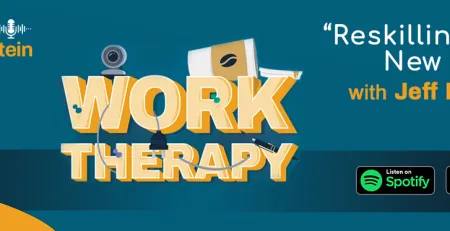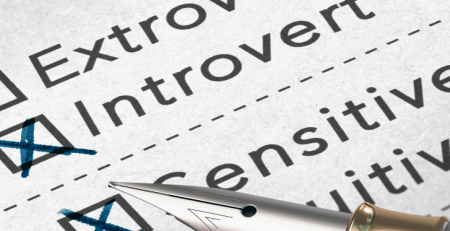Burnout and Buy-In: A discussion with Dr. Paul Bartone
In the wake of the pandemic, the term “burnout” has reached a fever pitch, infiltrating our LinkedIn feeds and news cycles incessantly. While some might dismiss this focus on burnout as a passing trend, burnout has been a part of the well-being conversation for decades. The pandemic, it seems, has amplified its reach and impact. As we continue to lean into the hybrid work model, recent research shows remote employees are working longer, spending time in more meetings, and having to keep up with more communication channels (SHRM, 2020).
Employees are pushing themselves harder than ever before to keep up with this always-on trend. But what happens when people reach their breaking point? Well, that’s where burnout rears its head. We sat with Dr. Paul Bartone, author of MHS’ Hardiness Resilience Gauge (HRG, 2018) to discuss. In the interview below, Paul shares his motivation to research hardiness and resilience and what he hopes individuals and organizations might take away from his work as they grow and partake in leadership and development programs focused on solving the burnout epidemic.
The interview below has been edited for length and clarity.
Dr. Paul Bartone is a Visiting Research Fellow at the Institute for National Security Policy, National Defense University. A retired U.S. Army Colonel and research psychologist, Paul served as Commander of the U.S. Army Medical Research Unit–Europe, and taught leadership and psychology at the National Defense University Eisenhower School and at the U.S. Military Academy West Point, where he also served as Director of the Leader Development Research Center.
How did you become so interested in hardiness and resilience?
PAUL: I’ve always been interested in understanding what makes people tick. As a grad student in Chicago, I drove a bus part-time for the Chicago Transit Authority. It’s a stressful job, with lots of time pressure, traffic, equipment breakdowns, and sometimes abusive passengers. At about the same time, I met two professors, Sal Maddi and Suzanne Kobasa, who were researching stress and health—this was the late 1970s. Maddi and Kobasa were early resilience researchers. They were among the first to study what makes some people cope successfully with stress while others get sick. They found that people who stayed healthy under stress all showed personality features they called “hardiness.” I ended up doing my dissertation under Maddi and Kobasa on stress and health in Chicago bus drivers. As I guessed, the drivers who coped well with stress and stayed healthy were also high in hardiness. I have stuck with the hardiness paradigm over the years because it’s a powerful model for explaining how individuals can respond so differently to the same stressful conditions.
Tell us how you define hardiness and resilience?
PAUL: To say someone is resilient is like saying someone is healthy. It may be true, but it’s only a description and not especially revealing. We still want to know what’s behind it. What makes a person healthy (e.g., balanced diet, exercise, good genes)? In the same way, we want to know what makes a person resilient. Much research shows that hardiness is one of the main factors behind resilience in responding to stress.
Hardiness is best defined as a general mindset or way of looking at the world that says life is interesting, my decisions matter, and I can handle stress. There are three facets to hardiness: Commitment, a sense of purpose and meaning in life; Control, believing that you have influence and control over most of your life experience; and Challenge, looking at stress and difficulties in life as challenges that you have the skills and abilities to deal with.
We often hear about burnout at work, more now than ever before. Why do organizations have such a hard time tackling burnout at a company-wide level?
PAUL: For a lot of organizations, I think it comes down to resources. Doing the things that are likely to reduce worker burnout will cost money and lower profits, so the temptation is to avoid or deny there’s a problem. I don’t mean mental health interventions necessarily, but policy changes such as hiring more workers, reducing work hours, adding more shifts, giving more breaks, etc. In this sense, some organizations consider burnout an individual problem rather than a collective one. For example, I have briefed senior military leaders who want to know, “What can we do about stress and PTSD in our units?”
I have always tried to address the organizational and work environment factors they can change, but leaders sometimes don’t want to hear that. They want to look at burnout as an individual problem—and blame the victim, so to speak. The mentality here is that the individual has weaknesses that make them more vulnerable to stress. That’s a cop-out. It’s easy for leaders because they don’t need to be responsible for what’s happening. Making certain policy shifts, like adjusting work hours, giving people more recognition and information, and providing opportunities to give input into systems and procedures, helps build that sense of commitment and control. Part of burnout is alienation, in that your work is not meaningful, and what you are doing is not contributing much value to the overall mission, creating frustration.
Burnout is not just about being tired or exhausted. It’s also about lacking a sense of purpose or value in your work and your ability to contribute. People high in hardiness have a generally strong sense of purpose in everything they do and are more resistant to alienation and burnout. Smart leaders find ways to let their workers know they are appreciated and that their work is important, especially in crisis scenarios. This is just one way to boost hardiness across the entire organization.
What is the tipping point for someone to cope with increased stress before negative results become inevitable?
PAUL: The “tipping point,” where stress can result in a breakdown, burnout, or whatever the case may be, is different for different people. Those high in hardiness are resilient longer and can tolerate more significant stress. But as we say in the Army, “Every[one] has a breaking point.” Even the highest hardy person is still human and can be damaged by stress.
Is there a line that can be blurred between developing hardiness and toxic positivity?
PAUL: Yes, there is a line, and “toxic positivity” may be a good term to use here. In the ’80s and ’90s, a lot of attention was paid to optimism (e.g., Seligman, Peterson, Scheier & Carver). While optimism is often associated with greater well-being and healthy coping with stress, too much optimism can lead to unhealthy denial or avoidance in the face of stressful situations. In the early 2000s, the concept of “grit” (also called persistence, consistency) generated similar interest. Like optimism, the downside of grit may be a refusal to admit when a given pathway or coping strategy isn’t working and it’s time to shift to another path.
In contrast, a hardy person is no Pollyanna, although generally optimistic and goal-oriented. They recognize and accept that life is often disappointing and painful. The highly hardy person accepts that painful experiences are an unavoidable part of life, a life that is still worthwhile and interesting. Failures and even disasters provide useful opportunities to learn about ourselves and others and valuable lessons for the future. Also, the hardy person has the self-knowledge and self-assurance to recognize when a situation is outside of their control or when one approach isn’t working and it’s time to shift gears and go in another direction.
Why does measuring progress in the area of hardiness and resilience using a standardized rating scale like the Hardiness Resilience Gauge (HRG) matter?
PAUL: Measuring hardiness with tools like the HRG is valuable for individuals who wish to assess their progress in a hardiness development program or who may be using self-help strategies to increase their hardiness mindset. It’s also valuable because it breaks down your hardiness score into the essential components of Commitment, Control, and Challenge. When you understand your strengths and weaknesses, you can focus on more specific strategies to develop them. Leaders who want to address workplace burnout may wish to administer the HRG to groups of workers and look at the average hardiness levels. This information can provide insights into the organizational climate and what impact various policies might be having on workforce hardiness and resilience.
Want more information on how to build a healthy, resilient culture in your organization? Get in touch with our team today.
Click here to learn more about the Hardiness Resilience Gauge.










